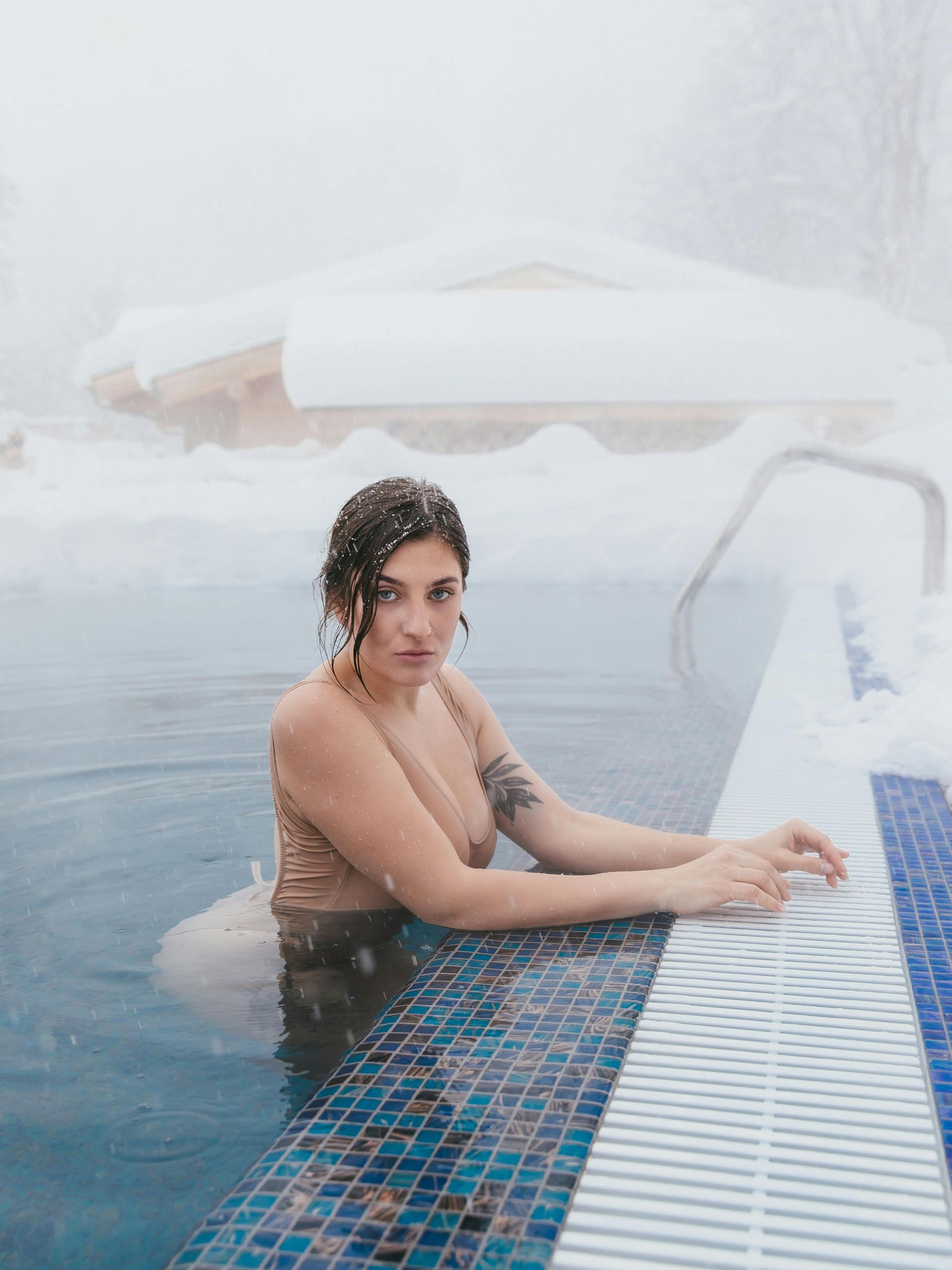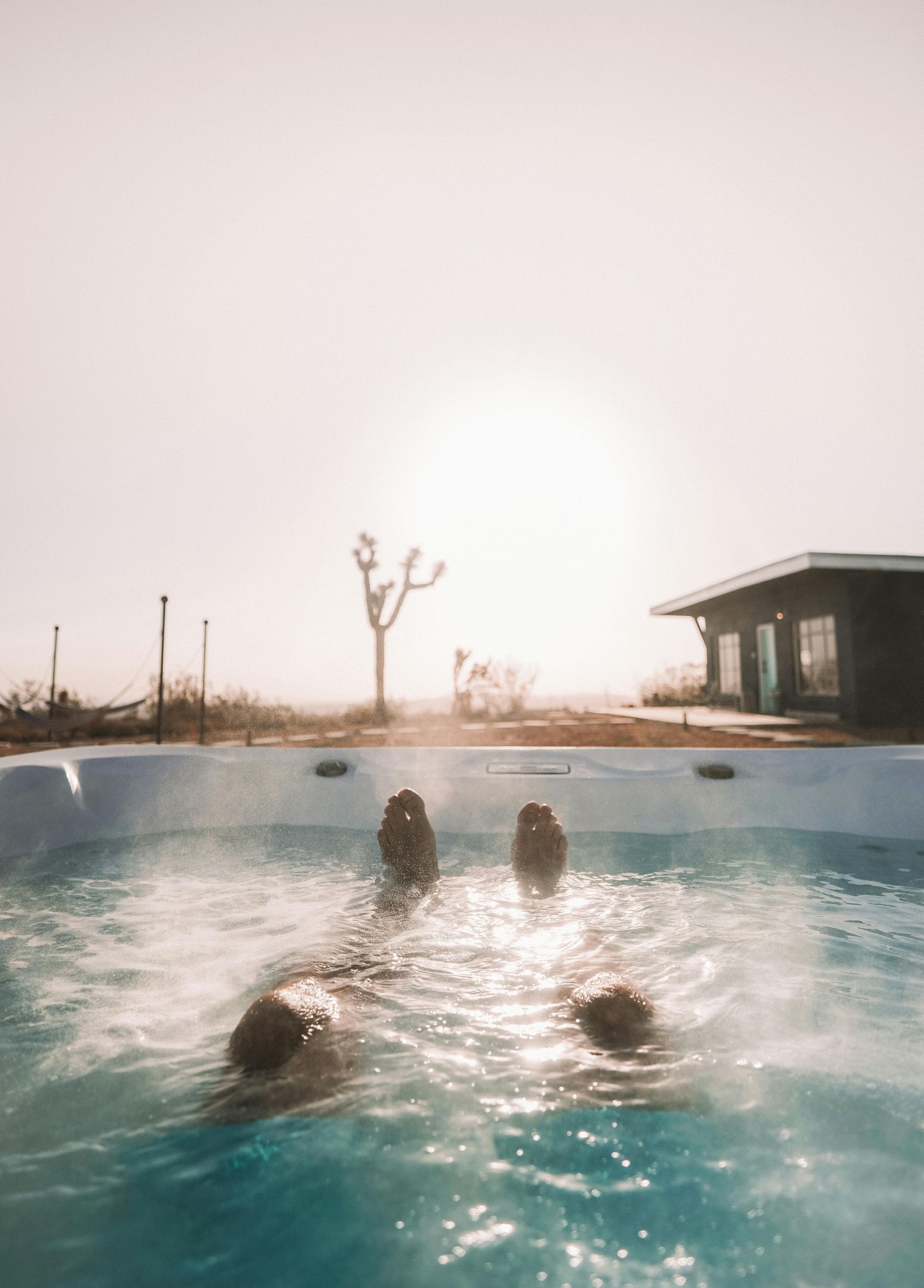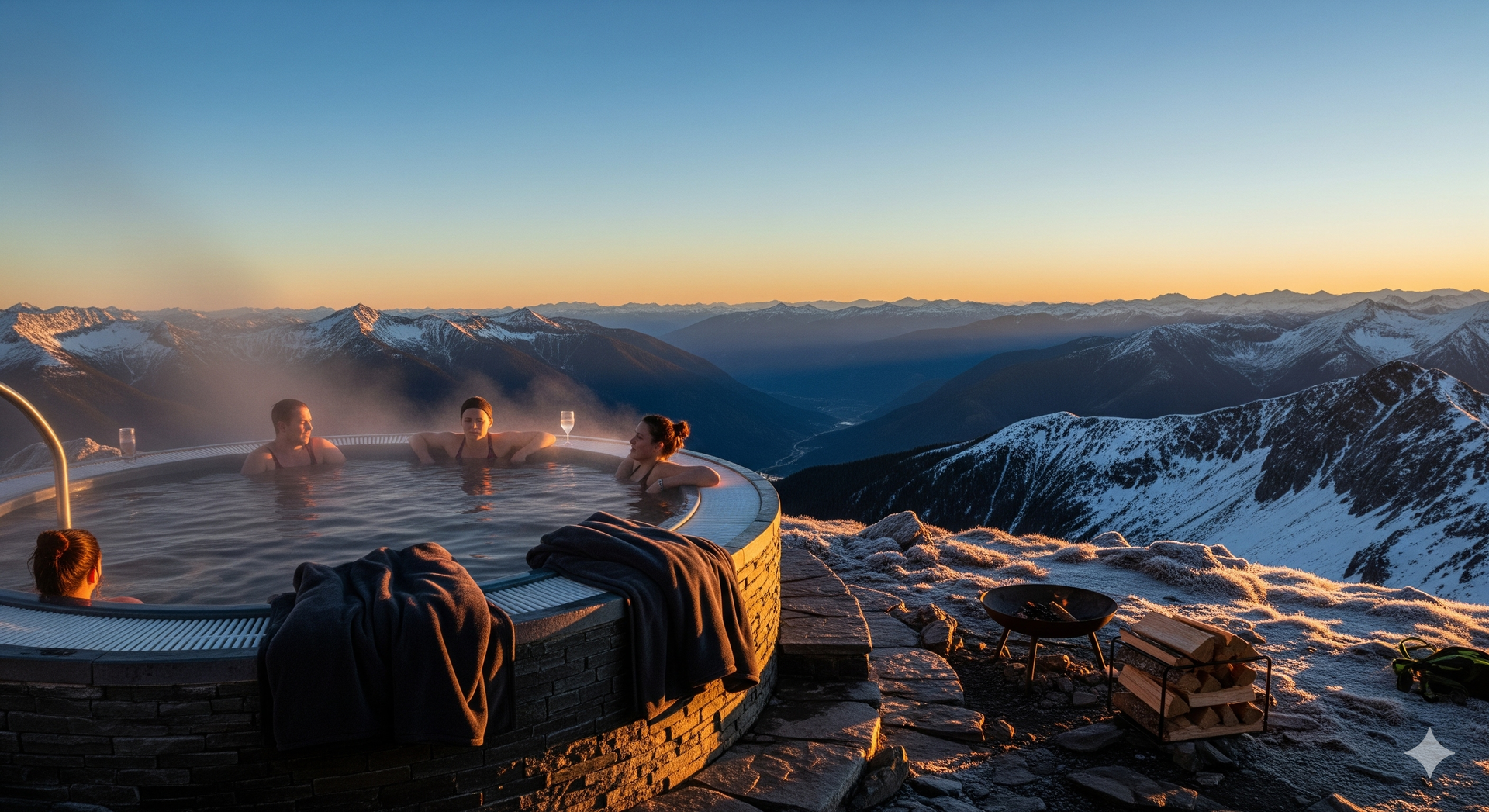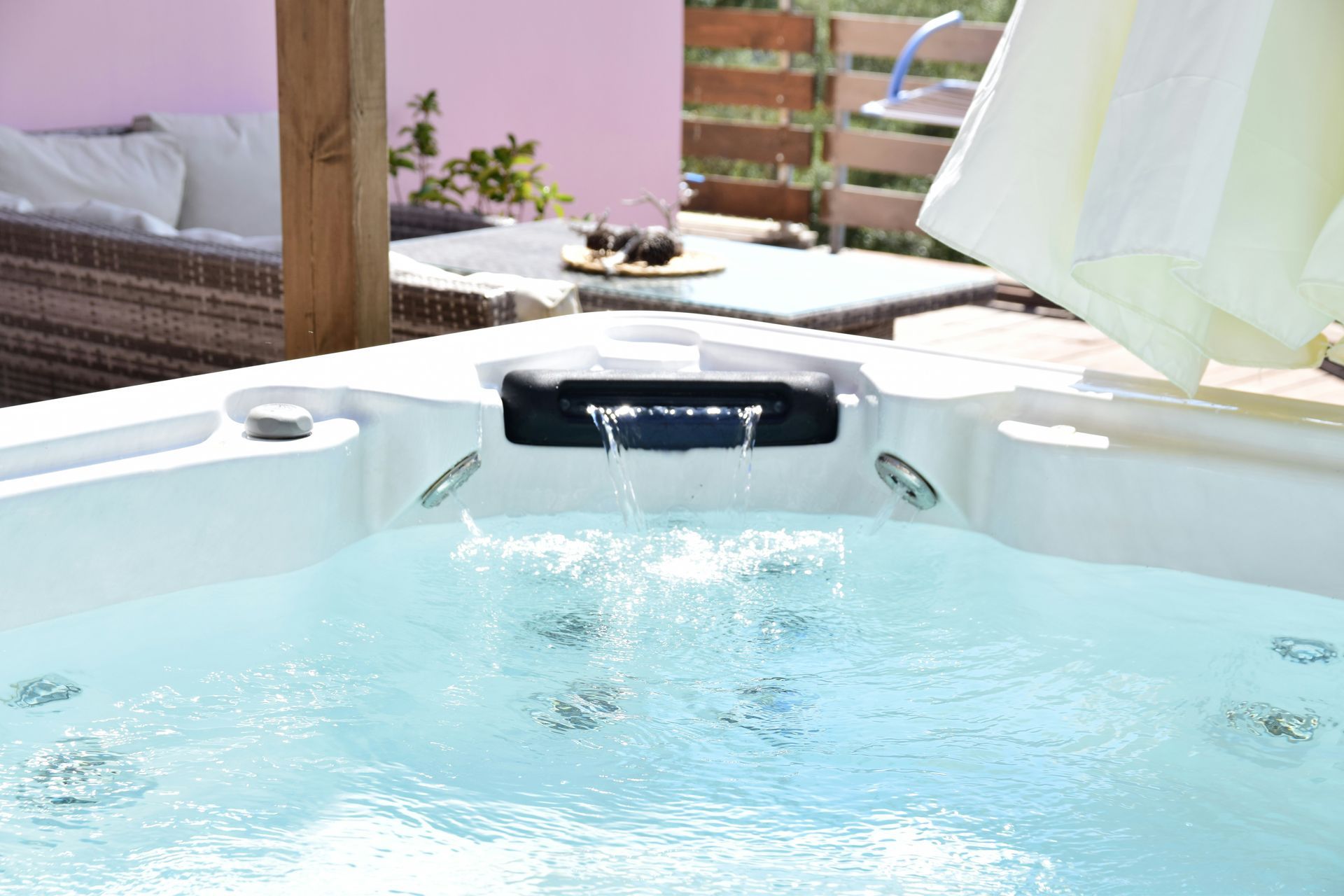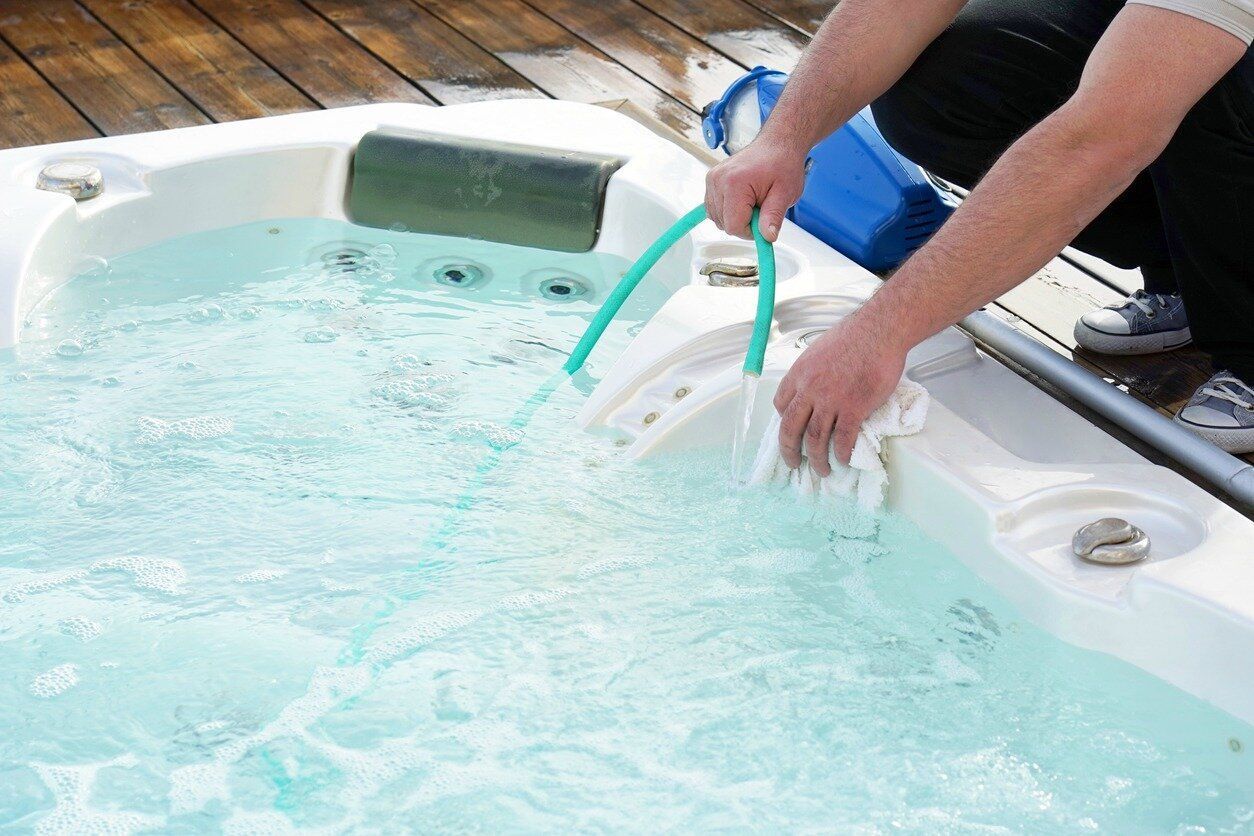Hot Tub Maintenance Checklist for High-Altitude Colorado Homes
Living in Colorado's beautiful mountains means you get to enjoy your hot tub with some pretty amazing views! But here's the thing: maintaining a hot tub at high altitude comes with its own set of adventures that are quite different from what folks at sea level experience.
Between Colorado's intense mountain sun, wild temperature swings, and that super-dry air we all know and love, your spa needs a little extra TLC. The good news? Once you know what to watch for, keeping your hot tub happy and healthy becomes totally manageable. This guide will walk you through everything you need to know to keep soaking in style, no matter what Mother Nature throws your way!
Key Takeaways
- You'll need to test your water more often than the standard schedule, as the high altitude makes chemicals disappear faster
- That gorgeous Colorado sunshine is tough on chemicals and equipment, so UV protection is your friend
- Winter prep needs extra attention because mountain freeze-thaw cycles can be brutal on equipment
- Your pump and heater work harder at altitude, so regular professional checkups are worth it
- With how water evaporates crazy fast up here, daily water level checks should be routine
- Prevention is way cheaper than emergency repairs, especially in winter when parts are hard to get
Daily Maintenance Tasks
Think of daily hot tub maintenance as your morning coffee routine: it might seem like a small thing, but it makes all the difference in how your day (and your spa) performs. In Colorado's challenging high-altitude environment, these quick daily checks become your first line of defense against expensive problems down the road.
The good news is that most of these tasks take just a few minutes and can easily become second nature once you establish the habit.
Water Level Monitoring
Here's something that might surprise you: your hot tub can lose water up to twice as fast as it would at sea level! Colorado's combination of lower atmospheric pressure, intense UV radiation, and that famously dry mountain air creates the perfect storm for rapid evaporation.
You'll want to check your water level every single day, ideally in the morning before your first soak. Keep that water level right at the midpoint of your skimmer opening: not too high where it might overflow during use, but definitely not too low where your pump might start sucking air and potentially damage itself.
Daily Water Level Tasks:
Many Colorado hot tub owners are shocked to discover they're adding water almost daily during peak summer months. This isn't a sign that something's wrong; it's just the reality of mountain life. However, if you notice a sudden increase in water consumption, that could indicate a leak that needs professional attention.
- Make checking water level part of your morning routine, perhaps with your first cup of coffee
- Add fresh water whenever the level drops below the skimmer midpoint. Don't wait until tomorrow
- Keep a simple log of how much water you're adding daily to spot any unusual patterns
- Consider installing an automatic water leveling system if you're frequently traveling or have a busy schedule
Visual Equipment Inspection
Your daily equipment check doesn't need to be complicated. Think of it as giving your hot tub a quick health checkup. Colorado's extreme weather conditions can cause components to deteriorate faster than in more moderate climates, so catching issues early can save you from major headaches later.
During your daily inspection, you're looking for anything that seems different from yesterday: unusual sounds, visible wear, loose connections, or anything that just doesn't look quite right. Pay special attention to your pump area during these checks.
Key Daily Inspection Points:
- Listen to your pump during startup: you'll learn to recognize its normal operating sound
- Check that your control panel displays are clear and responding properly to input
- Look for any visible water drips around plumbing connections or equipment areas
- Ensure your hot tub cover is properly secured and not showing signs of UV damage or waterlogging
- Take a moment to clear any debris from around equipment areas, as leaves, snow, or dirt can impact performance
Weekly Water Chemistry Management
Okay, let's talk water chemistry! At high altitude, your chemicals have a shorter lifespan thanks to that intense Colorado sunshine. You'll want to test at least 3 times a week (daily in summer) to stay ahead of the game.
Testing Your Water
Grab some good test strips or a digital tester. Accuracy matters when you're making frequent adjustments. That UV radiation up here breaks down sanitizers super fast, so frequent testing isn't just helpful, it's necessary for safe soaking.
| Parameter | Ideal Range | High-Altitude Tips |
|---|---|---|
| pH Level | 7.2 - 7.8 | Test daily during summer - altitude affects water's buffer capacity |
| Total Alkalinity | 80 - 120 ppm | Aim for higher end (100-120) for better pH stability |
| Sanitizer Level | 3 - 5 ppm | UV breaks down chlorine quickly - check every 2-3 days minimum |
| Calcium Hardness | 150 - 300 ppm | Monitor closely as evaporation concentrates minerals |
Chemical Storage Tips
Store your chemicals somewhere cool and dark: that garage that gets afternoon sun will cook your chemicals faster than you'd believe! Inside your house is ideal, or at least somewhere that stays under 80 °F.
- Cool, dark storage away from sunlight
- Keep different chemicals separated
- Use UV-stabilized sanitizers when possible
Monthly Deep Cleaning Procedures
Monthly deep cleaning takes on extra importance when you're dealing with Colorado's environmental challenges. The combination of intense UV exposure, frequent temperature changes, and that ever-present mountain dust means your hot tub systems are working overtime. Think of your monthly deep clean as a spa day for your spa: it's an opportunity to reset everything, catch developing issues, and ensure all systems are running at peak efficiency for the month ahead.
Filter System Deep Clean
Your filters are the unsung heroes of your hot tub maintenance routine, and in Colorado's dusty, high-altitude environment, they're working harder than you might realize. Monthly deep cleaning becomes essential rather than optional when you're dealing with mountain conditions. The good news is that a thorough filter cleaning can dramatically improve your water quality and reduce strain on other system components.
Here's a pro tip that many Colorado hot tub owners swear by: invest in two complete sets of filters. This allows you to rotate them monthly, so you always have a clean set ready to go while the dirty set soaks in cleaning solution. This rotation system means you're never without properly functioning filtration, which is particularly important during peak usage periods or when weather conditions make maintenance more challenging.
- Remove filters and give them a thorough rinse with your garden hose to remove loose debris and surface buildup
- Soak filters in proper spa filter cleaner for 8-12 hours, and don't use household cleaners that can damage filter media
- Rinse thoroughly after soaking and allow to air dry completely before reinstalling, as damp filters can harbor bacteria
- Inspect filter pleats during cleaning for tears or excessive wear that might indicate replacement time
- Keep a spare set of filters for rotation, which makes monthly maintenance much more manageable
Shell and Surface Care
Colorado's high-altitude environment is particularly tough on hot tub surfaces. The combination of intense UV radiation and rapid temperature changes can cause discoloration, fading, and surface degradation that you might not see in more moderate climates. Monthly surface care helps protect your investment and keeps your spa looking great year after year.
When cleaning your hot tub shell, always use products specifically designed for spa surfaces. Many household cleaners contain ingredients that can damage acrylic or fiberglass surfaces, void warranties, or leave residues that affect water chemistry. The waterline area deserves special attention since this is where body oils, lotions, and minerals concentrate most heavily.
- Use only non-abrasive spa cleaners designed for your specific shell material: when in doubt, check with your dealer
- Pay special attention to the waterline with enzyme cleaners that break down body oils and lotions
- Apply UV-protective products if recommended by your manufacturer: high-altitude sun exposure is intense
- Clean and condition your hot tub cover monthly, because it takes a beating from Colorado's UV exposure and temperature swings
- Inspect and clean around jets and controls during your monthly cleaning to prevent buildup
Plumbing Line Flush
Monthly plumbing line flushing becomes more important at high altitudes because the frequent chemical adjustments and rapid water evaporation can lead to increased buildup in your spa's circulation system. A good line flush removes accumulated biofilm, mineral deposits, and other contaminants that regular filtration might miss.
- Use a proper spa line flush product designed to clean internal plumbing without damaging seals or gaskets
- Run the circulation system for the recommended time to ensure thorough cleaning of all plumbing lines
- Consider more frequent line flushes during periods of heavy use or challenging water chemistry
Seasonal High-Altitude Tips
Colorado's seasons can be pretty dramatic, and your hot tub needs to roll with the changes! Here's what to focus on throughout the year.
Winter Prep
Winter prep is serious business at altitude! Those freeze-thaw cycles can wreak havoc on equipment, so a little prevention goes a long way.
- Insulate any exposed plumbing before the first hard freeze
- Keep water temperature consistent, even when not using the spa
- Clear snow from covers and equipment regularly
- Schedule a professional checkup before winter hits
Summer Care
Summer means dealing with that intense Colorado sun! Your chemicals will disappear faster, and you'll be adding water more often.
- Test water chemistry more frequently, daily during heat waves
- Provide shade for equipment areas when possible
- Watch for overheating during extreme heat
When to Call the Pros
While you can handle most daily and weekly maintenance yourself, sometimes it's worth bringing in the experts. This is especially true in Colorado, where altitude creates unique stresses on equipment.
Consider annual professional inspections, ideally in early fall before winter hits. A good technician can spot developing problems and help you avoid expensive emergency repairs during a blizzard!
- Annual electrical and pump system checkup
- Heating system efficiency check
- Professional leak detection and plumbing inspection
When searching for "hot tub maintenance near me," look for tub technicians with high-altitude experience who understand Colorado's unique challenges. Having a relationship established before you need emergency hot tub service and repair makes winter breakdowns much less stressful.
Frequently Asked Questions
How often should I test my water at high altitude?
At least 3 times a week, and daily during summer when that Colorado sun is really blazing. High altitude means chemicals break down faster than you'd expect, so staying on top of testing keeps your water safe and balanced.
What's different about hot tub maintenance at altitude?
Everything happens faster up here: water evaporation, chemical breakdown, and equipment stress from temperature swings. You'll test more, add water more often, and need to protect everything from that intense mountain sunshine.
How do I find good hot tub maintenance near me?
Look for local residential hot tub service providers who specifically understand high-altitude challenges. Ask other hot tub owners in your area for recommendations; mountain communities are great about sharing what works!
Is winterizing different at high altitude?
Absolutely! Those freeze-thaw cycles can be brutal on equipment, so you need extra insulation and consistent heating. Professional pre-winter checkups are really worth it to avoid emergency repairs in a blizzard.
What chemicals work best for high-altitude spas?
UV-stabilized sanitizers are your best bet since they hold up better against that intense mountain sun. Store everything in a cool, dark place and keep backup supplies for winter when getting to the store might be tricky.
Final Thoughts
Maintaining a hot tub in Colorado's beautiful mountain environment doesn't have to be overwhelming! Yes, you'll test more often and pay closer attention to your equipment than folks at sea level, but the payoff is totally worth it. There's nothing quite like soaking under those incredible starry Colorado skies. Stay on top of your hot tub maintenance routine, build a relationship with a good local service provider, and your spa will keep you relaxed and happy for years to come. Remember, a little prevention beats a big repair bill every time, especially when there's three feet of snow outside!
Ready to keep your Colorado hot tub in perfect condition? Contact our experienced team for professional hot tub service and maintenance tailored to high-altitude challenges.
Reference:
https://www.cdc.gov/healthy-swimming/toolkit/pool-chemical-safety.html


